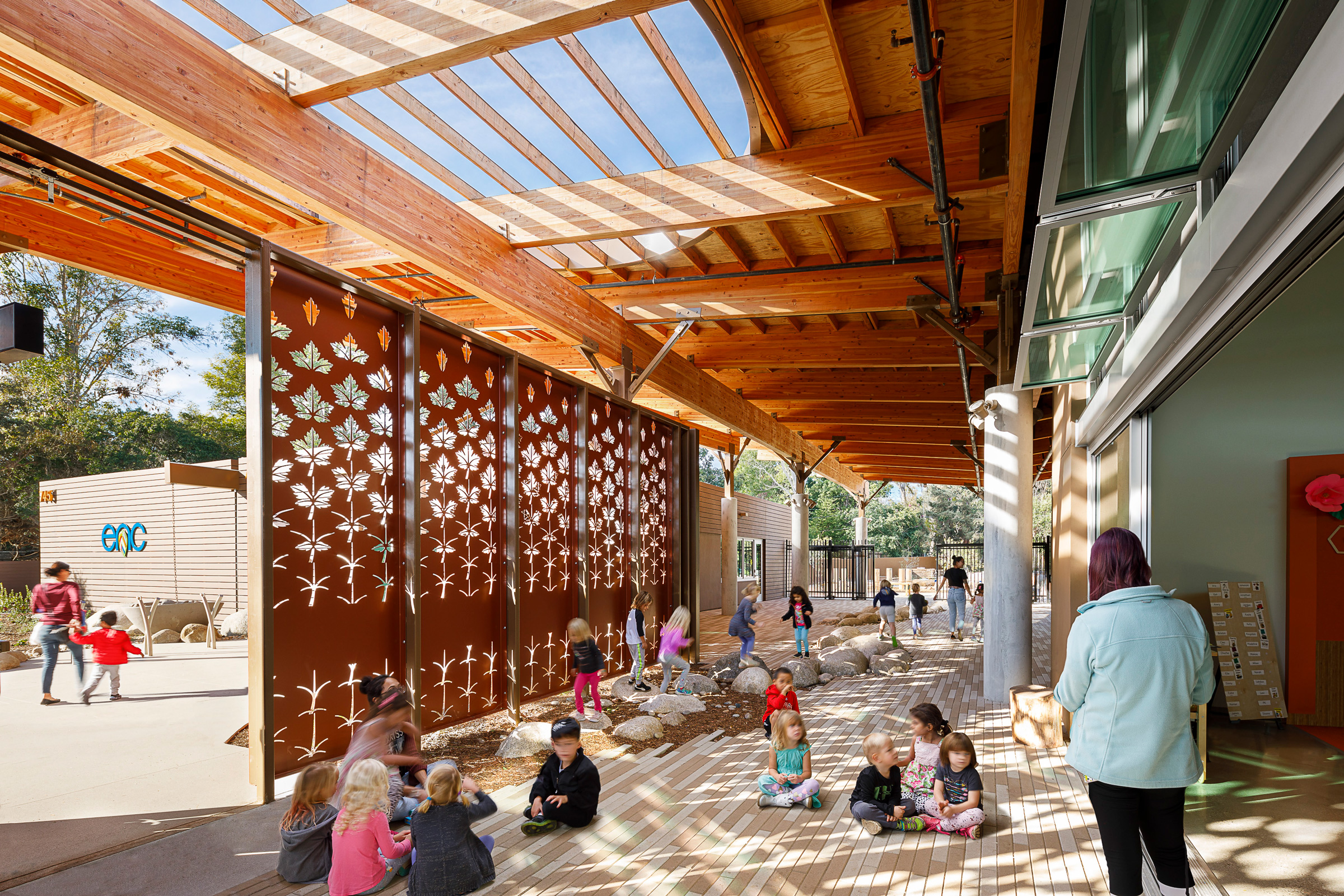Story at a glance:
- Net zero is possible to achieve even within the strict budgets of a public school district.
- LPA Design Studios specializes in designing energy-efficient K-12 projects.
- Often the estimated payback for net-zero projects can be less than 10 years.
Climate change and the current crisis are an opportunity for a profound, systemic shift to a more sustainable society. Momentum is building for public school districts to develop net zero energy (NZE) facilities—a big step in reducing the carbon emissions in communities. Yet there are still lingering misconceptions about what it takes for schools to achieve the goal.
At the onset of a project, we often find ourselves clarifying to clients that net zero is, in fact, possible, even within the strict budgets of a public school district. The common assumption or reaction is that it’s going to be more expensive, complicated, or difficult to maintain and operate, which doesn’t have to be the case. Even modernizations have increased in importance, as embodied carbon has become a key factor to consider in construction. These project types have a huge upside for energy performance improvements to meet current sustainability targets and better support learning outcomes.
But it’s still a big leap for district leaders, who are stewards of taxpayer money and remain laser-focused on their primary mission to support students to fulfill their potential. For many it’s a complex discussion, touching on everything from construction budgets to community priorities. Even the term “net zero” is confusing and used in different ways. (In most cases, net zero energy refers to a highly energy-efficient building with output from onsite renewable energy sources equal to overall annual energy consumption.)
For many districts the process toward net zero starts with a holistic understanding of the life of a facility, taking a much broader and long-term approach, including initial costs, return on investment, maintenance, and performance over the life of a facility.
A New Era for Net Zero
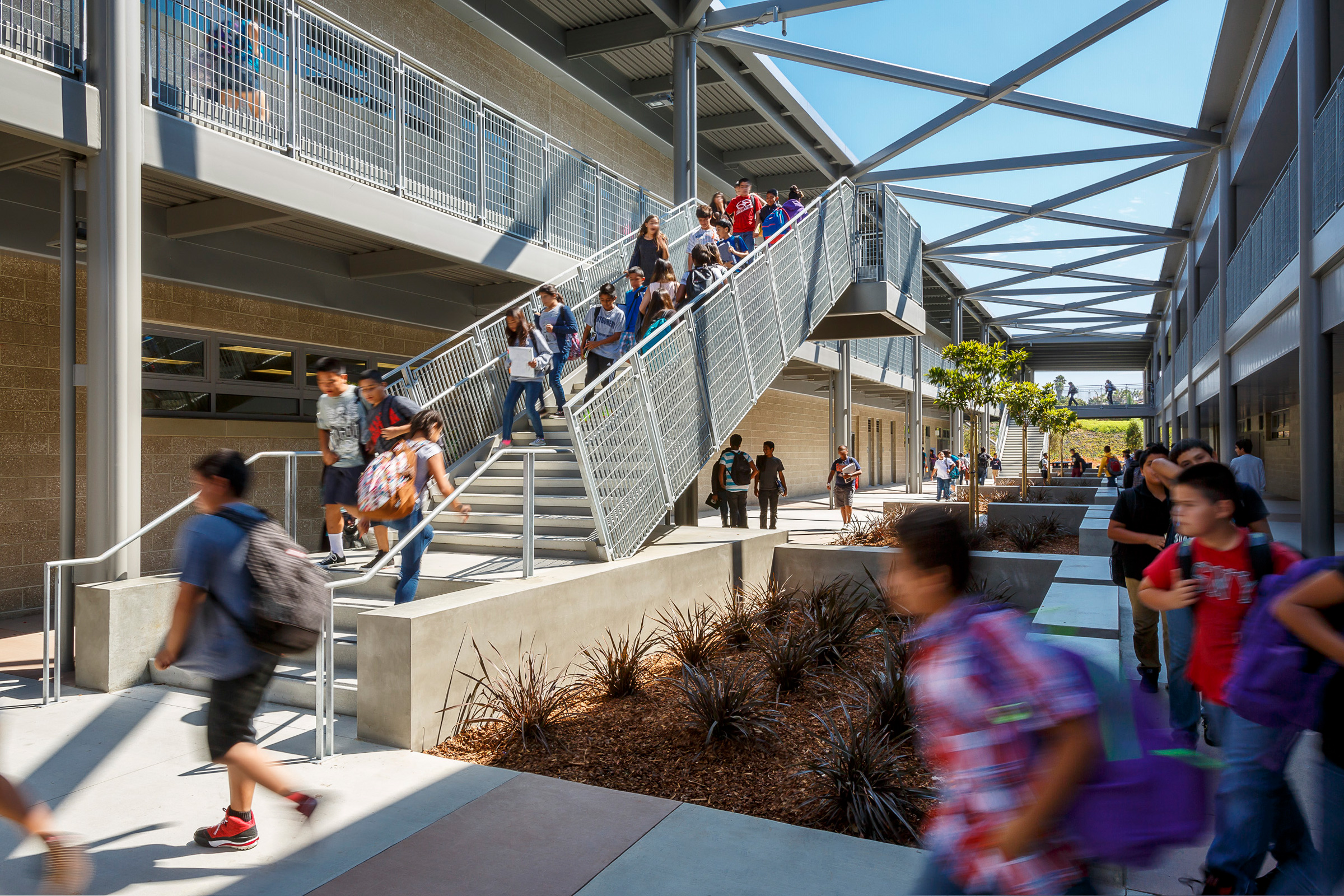
Montgomery Middle School. Photo courtesy of LPA Design Studios
The concept of a net zero K-12 school is nothing new. In 2013 LPA worked with Sweetwater Union High School District in California to develop a net zero design for a 37,500-square-foot addition for Montgomery Middle School, including a mix of passive strategies and photovoltaic (PV) panels to offset 100% of the facility’s reduced energy use.
Thanks to more energy stringent building code updates, community movements, and initiatives like the AIA 2030 Commitment, we’re seeing a shift in attitudes. Districts are increasingly bringing forward energy efficiency as a critical component in the RFP (request for proposal) process and in the start of design discussions. I expect that will soon be the norm, rather than the exception.
While the stigma surrounding net zero persists, in many cases, once we frame the conversation around the long-term financial and educational benefits, we start to see more buy-in. New schools can be catalysts for positive change in their communities and they will serve multiple generations; we’re talking 50 to 100 years. Often the estimated payback for net-zero projects can be less than 10 years.
At the same time, the initial costs are often less than expected. The construction industry has come a long way. Materials, from high-performance glazing to solar panels, are more efficient and more widely available. Some construction firms estimate the cost premium for net zero versus a typical school is only 2%. Contrast that figure with a recent US Department of Energy report, which found that US schools spend more of their budgets paying for electricity and natural gas than they do buying textbooks and computers. In many ways the investment in net zero is not a cost premium, it’s cost avoidance, allowing schools to divert money from energy costs to students and learning opportunities. That is the opportunity high-performance learning environments provide—to reallocate funds for educational purposes.
Once you share this perspective, people get it, and the process can start focusing on the best way to hit the target.
Focusing on Energy Use Reduction
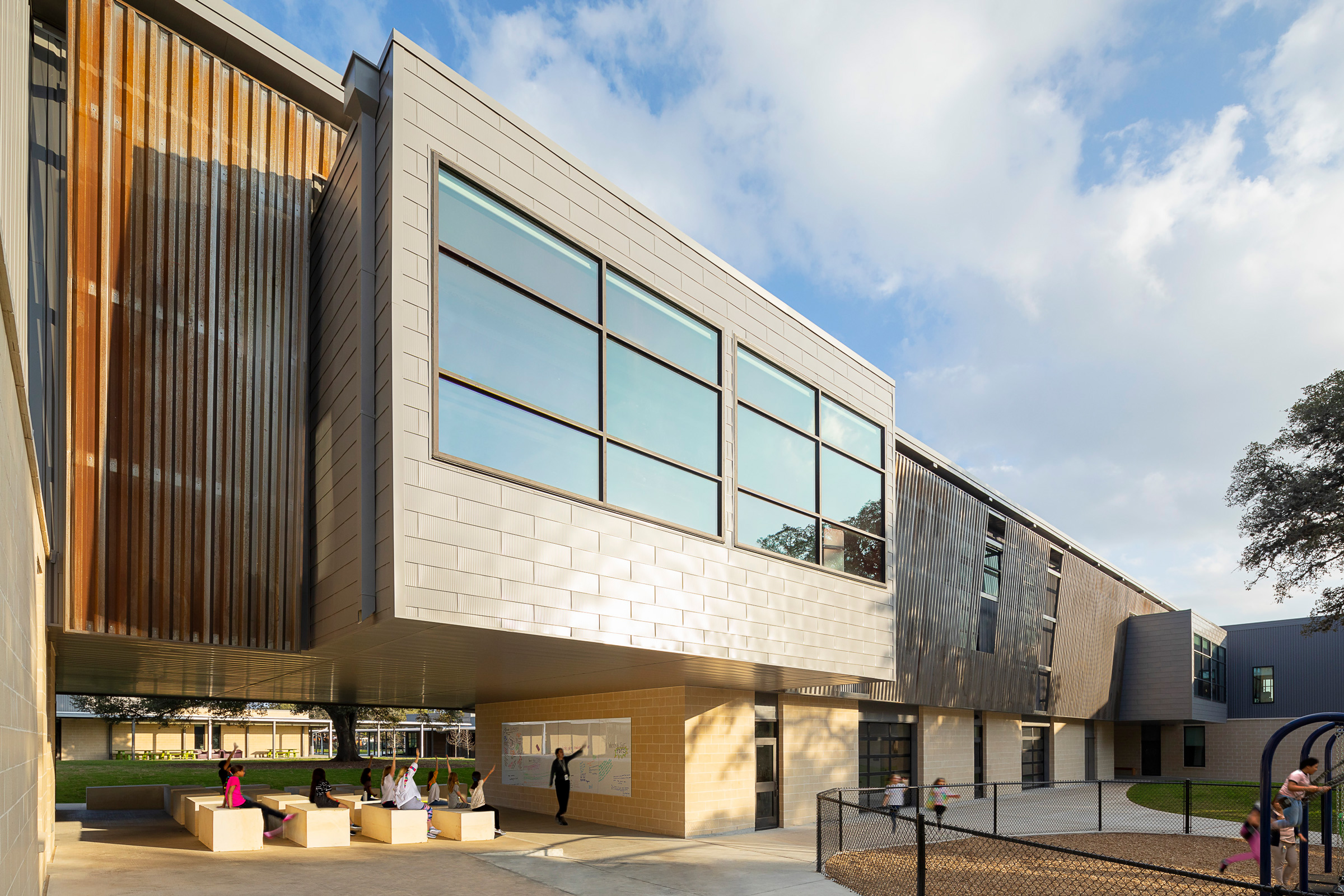
Menchaca Elementary. Photo courtesy of LPA Design Studios
For public schools to achieve net zero, energy efficiency needs to be baked into every aspect of the design. The process starts with a focus on reducing the energy load, rather than on production. Decreasing energy use reduces the need to produce energy, which reduces costs, as well as maintenance and upkeep. It may sound simple, but building the appropriate amount of space for the school’s needs is key, and it’s one reason we often include our research team, LPAred, in the initial evaluation.
Given the limited space and budget typically available for schools, passive energy-reduction strategies need to be the foundation of any design targeting net zero. That includes proper siting, leveraging the outdoors, cross ventilation, and daylighting. To find every opportunity, we believe it is vital to take an integrated design approach, including engineers, landscape architects, and interior designers.
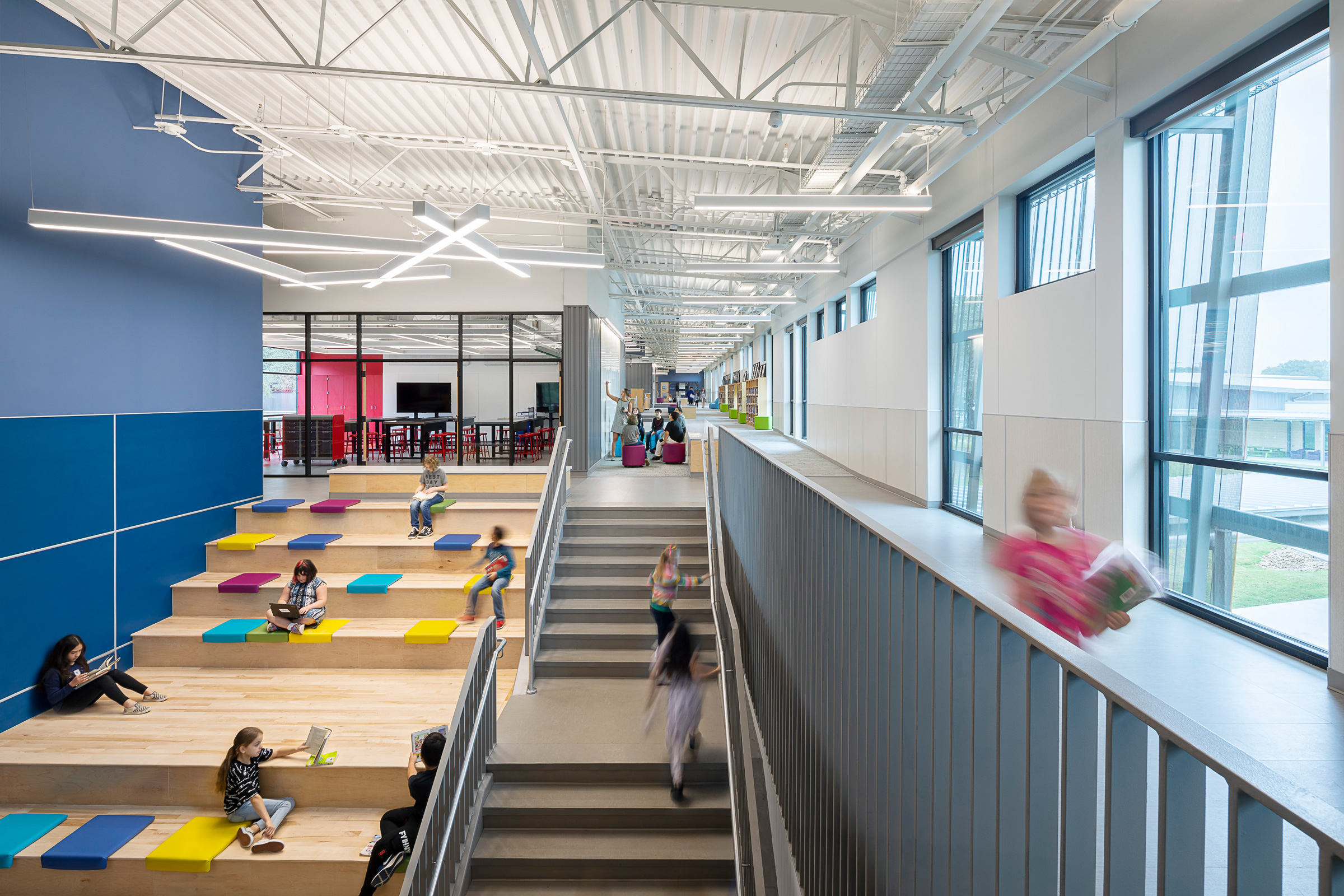
Menchaca Elementary. Photo courtesy of LPA Design Studios
New facilities designed through an informed, multidisciplinary approach can link energy efficiency with larger campus goals, finding new efficiencies within the building and incorporating extensive outdoor learning opportunities. LPA’s design for Menchaca Elementary School in Austin, Texas—a series of three buildings set amid outdoor play spaces and heritage oak trees—offered exterior circulation, gardens, and extensive use of outdoor classrooms. The school’s overall energy use was reduced by 53% from a baseline, primarily through passive measures like building orientation, shading, and strategic use of natural light.
At the same time we are strategic and methodical about building systems selection, looking to ensure they’re both high-performing and straightforward to maintain. We’re proponents of electric systems in place of gas, which can take advantage of clean renewable energy. As part of our inclusive approach, facilities and maintenance stakeholders are included in the evaluation process, and tough questions are always part of the discussion: How complex and how expensive will the systems be? Schools certainly don’t need extremely complicated and difficult systems. Our goal is to work with them to balance the performance goals and what is reasonable for them to have on-campus.
Integrating Renewable Energy
Energy use reduction and conservation measures will help reduce a large percentage of energy needs, and a source of renewable energy will complete the net zero goal.
When it comes to onsite renewable energy, photovoltaic systems are still the most effective strategy. But including PV arrays in a design can still be daunting for many schools. Many districts opt for a power purchase agreement with an energy provider rather than purchasing the systems, because of the risk avoidance and no upfront capital investment. In many cases the third-party companies prefer to build their systems on open land—parking lots or fields—rather than integrating them into the building.
Power purchase agreements may alleviate concerns about short-term expenses, but there are further advantages for schools to integrate PV into the design. There are incentives and tax credits available as well as the long-term financial benefits of owning their own clean energy systems.
LPA’s LEED Platinum, net zero Environmental Nature Center (ENC) Preschool in Newport Beach, California, provides a roadmap for how a facility can combine a well-integrated effective PV strategy and passive techniques to hit the target. Natural ventilation and building orientation dramatically reduced energy usage in an indoor-outdoor learning space designed with the cognitive development of young children in mind. The facility’s butterfly roof opens the space to natural light and is pitched and sited to support a solar array. It also channels rainwater to a series of rock basins and bioswales.
An Expanded Definition of ROI
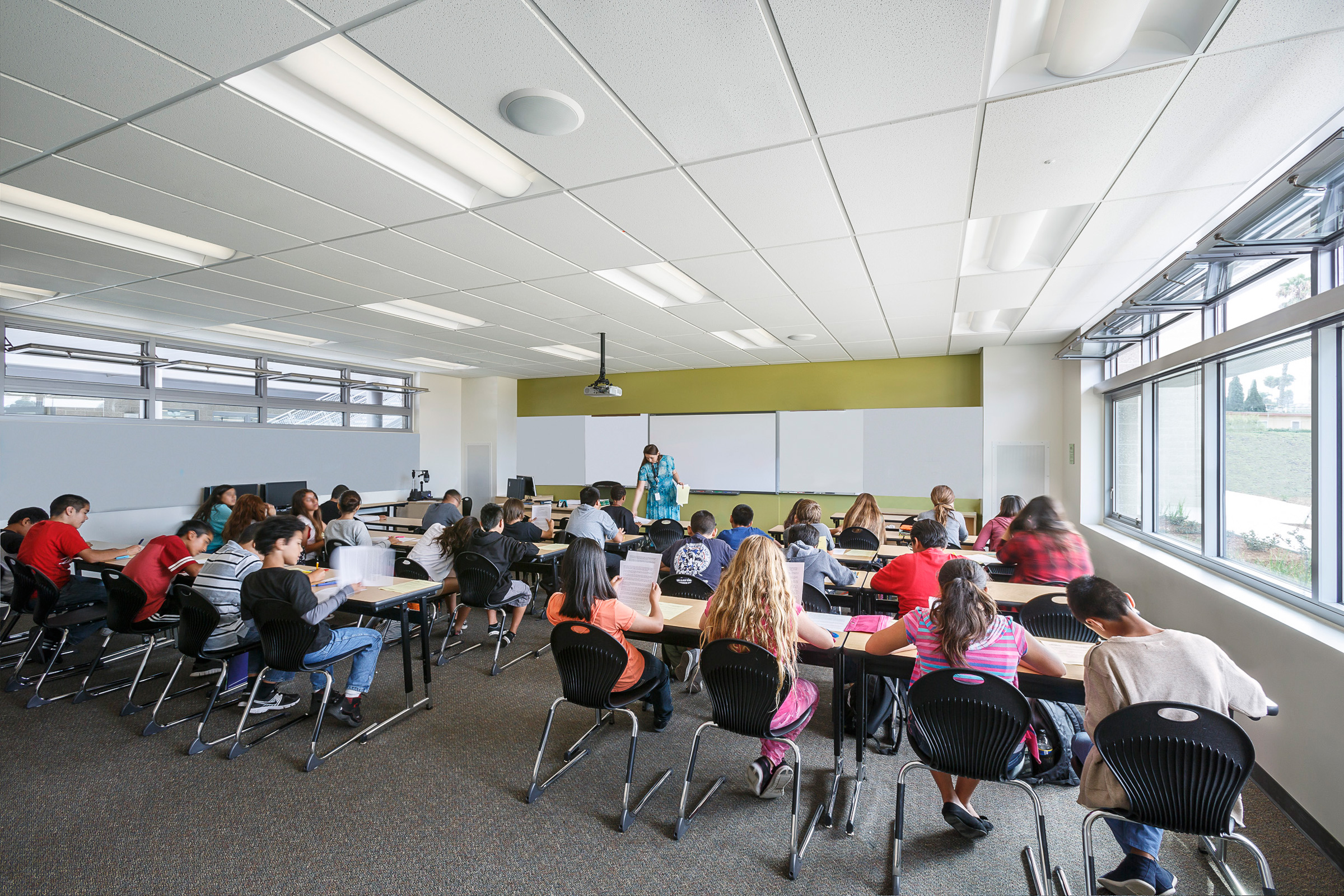
Inside Montgomery Middle School. Photo courtesy of LPA Design Studios
Any analysis of a net zero design should consider the impact on the school beyond energy consumption. The goal is always to deliver facilities that will inspire students, teachers and staff; environments where everyone feels safe and comfortable. A net zero strategy can offer benefits far beyond the energy efficiency.
Research shows that increased air quality, better ventilation and increased daylighting greatly improve student performance. One study (Barrett, Davies, Zhang & Barrett, 2015) found that 16% of the variation in learning progress can be attributed to physical environments in primary schools, highlighting a direct correlation between physical space design and improvements in student progress in core subjects like reading and mathematics. A more sustainable campus has been shown to bolster wellness, create more hands-on learning opportunities and serve as a living lab for inquiry-based learning activities.
When we put sustainability strategies on display, net zero becomes a demonstration tool for the campus. Students and teachers experience how we as humans can create a built environment that respectfully interacts with the sun, rain, and natural environment.
When we achieve that on a project, the effect is incredible. The campus sparks students’ natural curiosity. It is an opportunity for teachers to teach about stewardship of our resources. The school becomes a catalyst for them to start to understand how we fit in the environment from a much broader perspective, leading them to be good global citizens.

